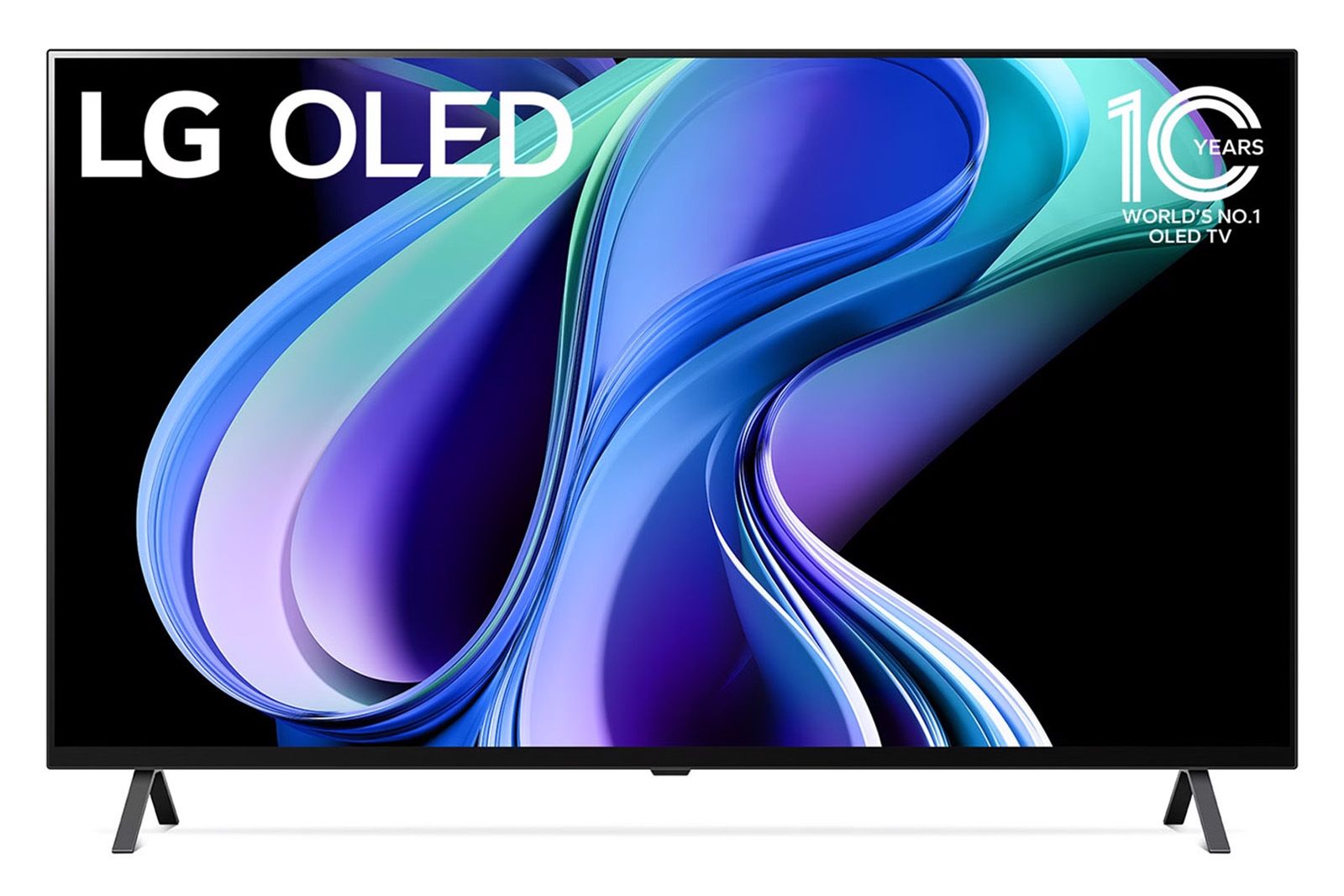LG OLEDs are legendary TVs. They’re widely available, of great quality, and sell at reasonable prices. LG also does a great job of keeping up with the latest technology, like ALLM, HMDI 2.1, and more. Plus, the company has made great strides towards reducing burn-in risk from earlier OLED TVs.
LG’s 77-inch OLED T plays into latest TV gimmick: Wireless and transparent screens
LG revealed its 77-inch wireless and transparent OLED TV at CES 2024. Here are the details on its headlining screen and more.
In short, if you’re looking for a good OLED TV, LG is on the shortlist in virtually every price range. Their budget lineup can dip under $1,000 while their top-end TVs compete with the very best TVs in the world. Here are the best TVs in LG’s OLED lineup right now.
Best LG OLED TVs: Our favorite picks
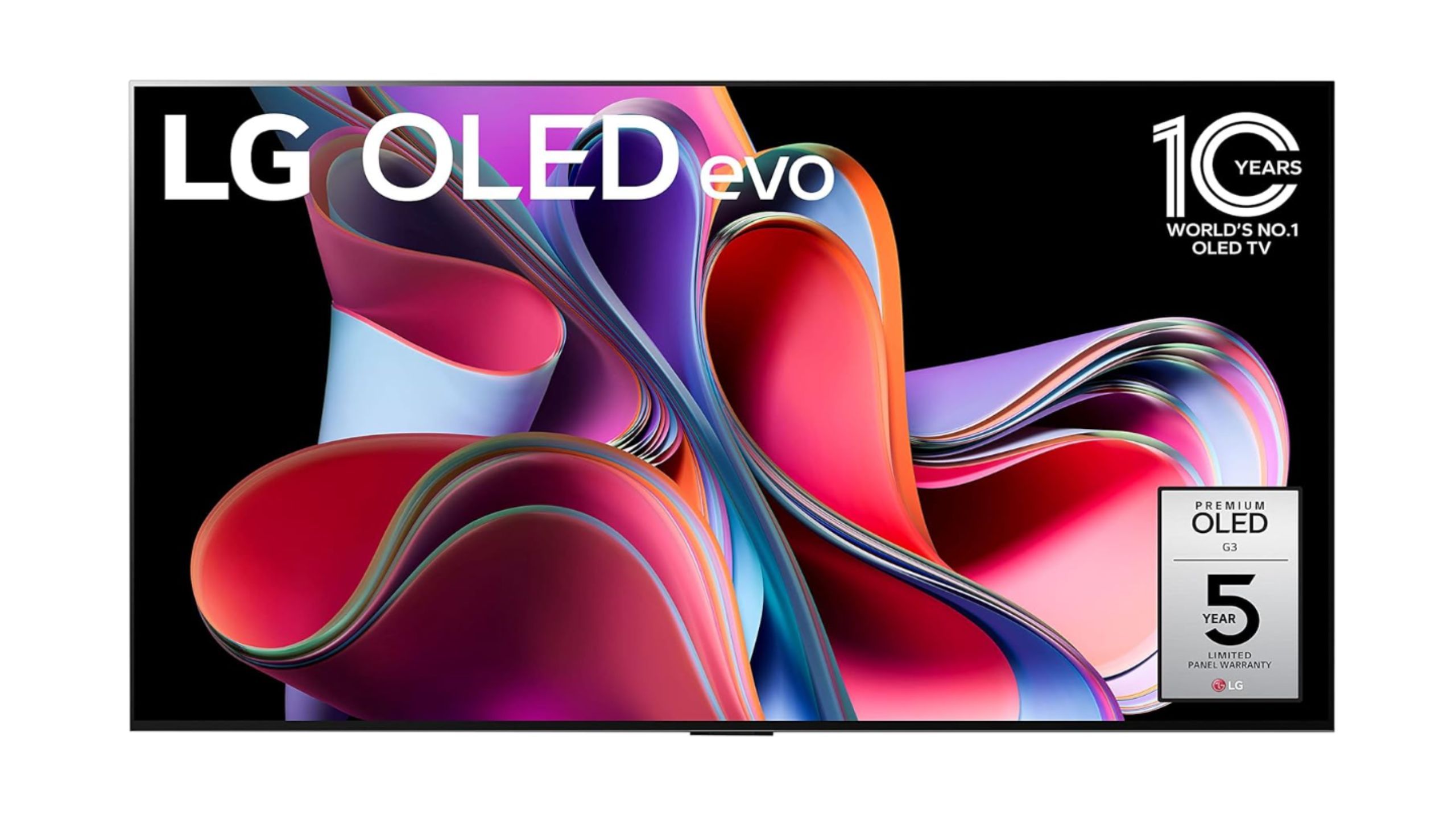
LG G3 OLED evo
1. Best overall LG OLED TV
If you have the money, this is LG’s best TV
$1897 $2300 Save $403
The LG G3 is the top tier LG OLED TV as of this writing. It has all the latest tech, like a Micro Lens Array that helps boost the brightness without stressing out the pixels on the TV. It’s just all-around great.
- One of the brightest OLEDs ever made
- Outstanding picture quality
- Also outstanding gaming support
- The built-in speaker is average at best
- Doesn’t come with a stand
The LG G3 is the crème de la crème of LG OLED TVs and one of the best TVs we’ve ever reviewed. The TV gets brighter than LG’s other OLEDs, and most OLEDs in general, with its clever Micro Lens Array, which helps brighten the screen by reducing light loss from reflections on the TV.
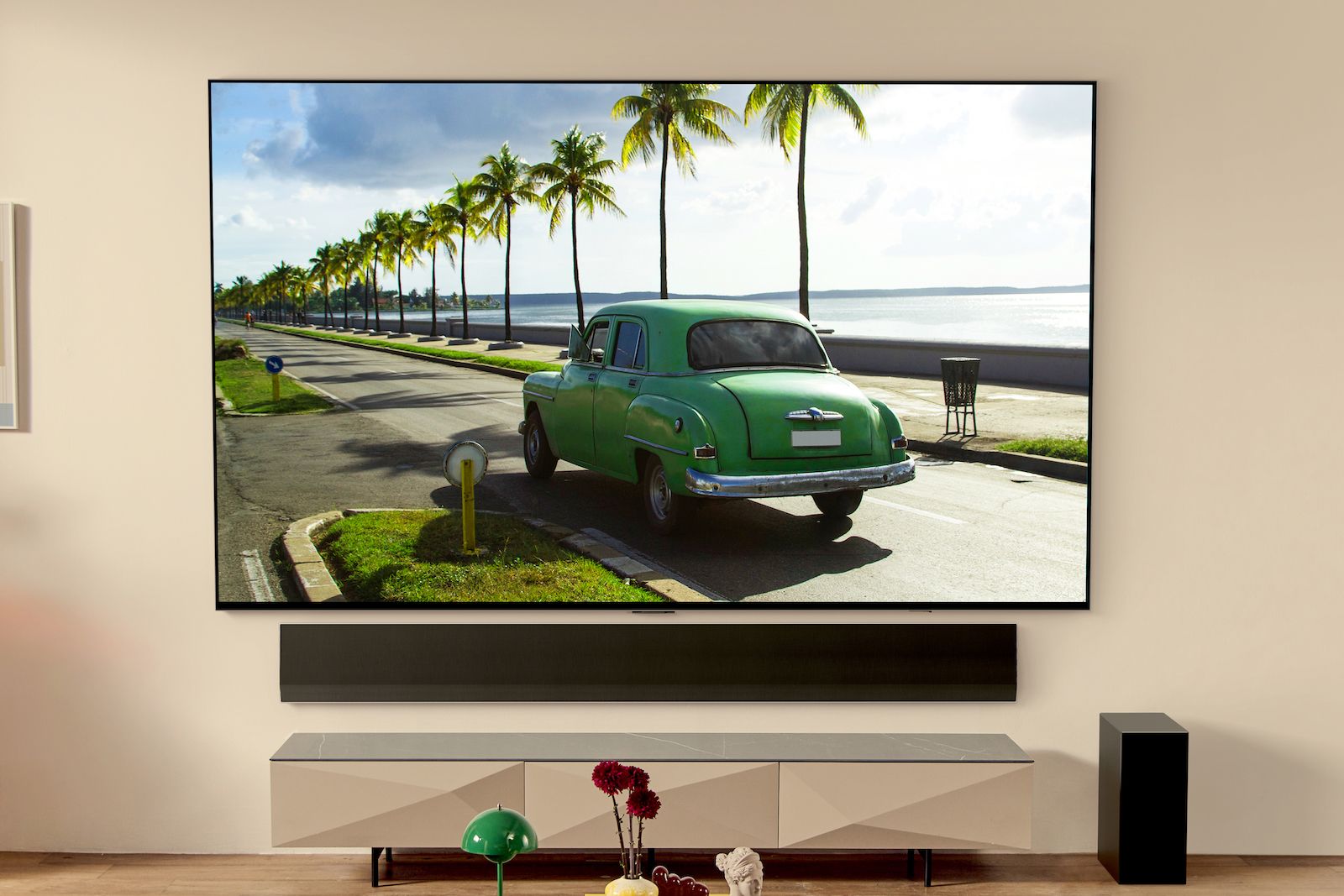
LG G3 OLED evo review: This is OLED 2.0
After years of tinkering and evolutions, LG’s new G3 OLED really feel like an actual revolution. And it rocks.
On top of being the brightest TV on the list, it also has perfect black levels, great colors, and an overall fantastic picture quality. The LG G3 is excellent in terms of gaming, with low input lag, excellent pixel response times, and support for all the latest gaming features like ALLM, VRR, and HDMI 2.1.
The 120Hz refresh rate also helps make things look extra smooth. Outside the lack of a stand and a rather mediocre built-in speaker, this TV does nothing else wrong.
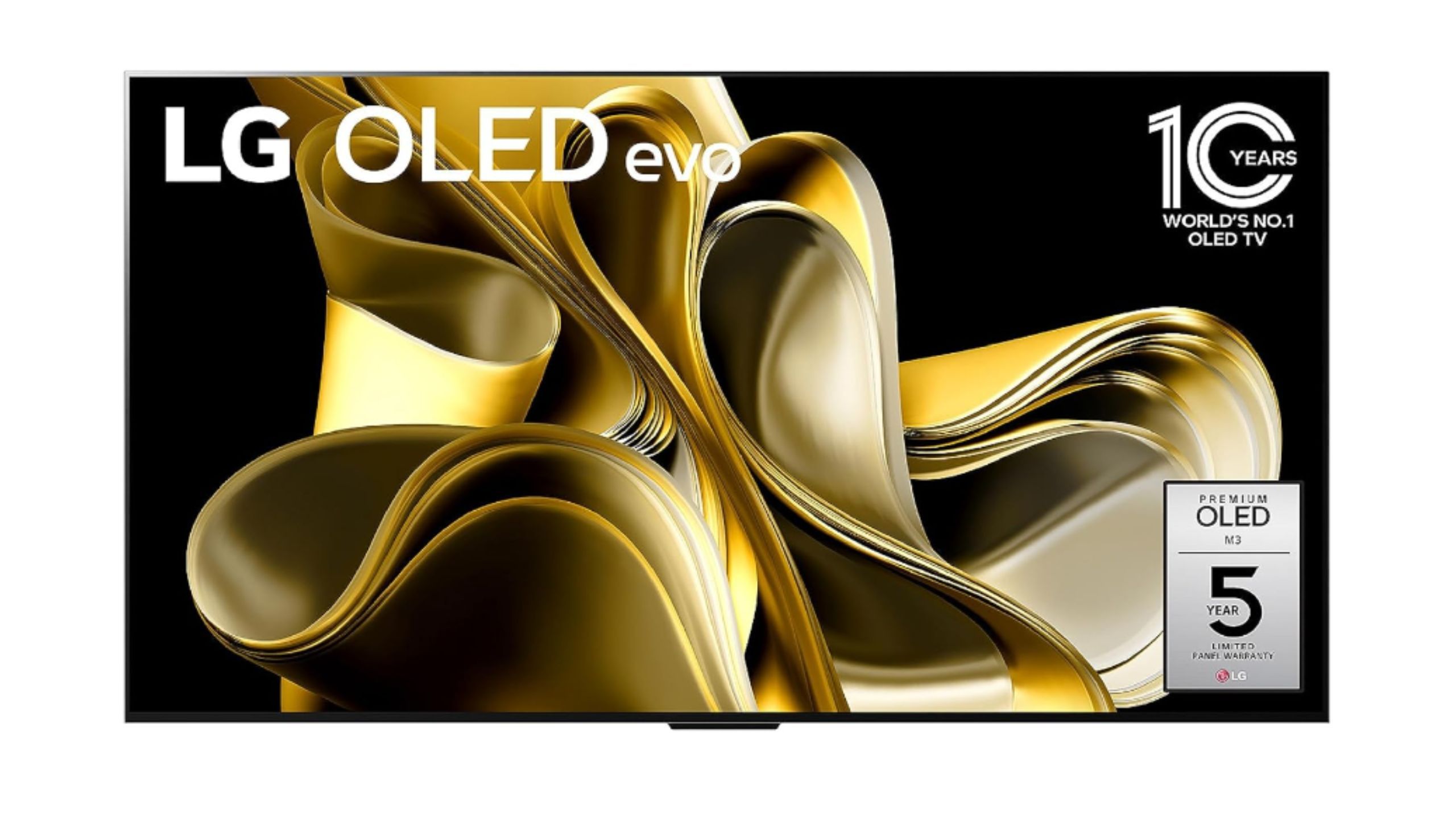
LG M3 OLED
2. Most premium LG OLED TV
If you want everything LG can do, get this
The LG M3 is LG’s most premium TV. It behaves a lot like the LG G3, but includes LG’s Zero Connect Box, so you can hang it on your wall and place the TV control box elsewhere for the slickest possible wall mounting.
- The same amazing picture quality of the G3
- Low-latency Zero Connect Box makes wall mounting super easy
- Great at gaming, even with the wireless aspect of it
- Smallest option is 77-inches, and it’s $5,000
- You’ll want to invest in a sound system
LG does have a more expensive TV than the G3, and it’s the M3. The M3’s internals are identical to the G3, so you’ll get the same great picture quality, more brightness via the Micro Lens Array, and all the gaming features like ALLM and VRR. However, the big difference is that the M3 uses a wireless control box.
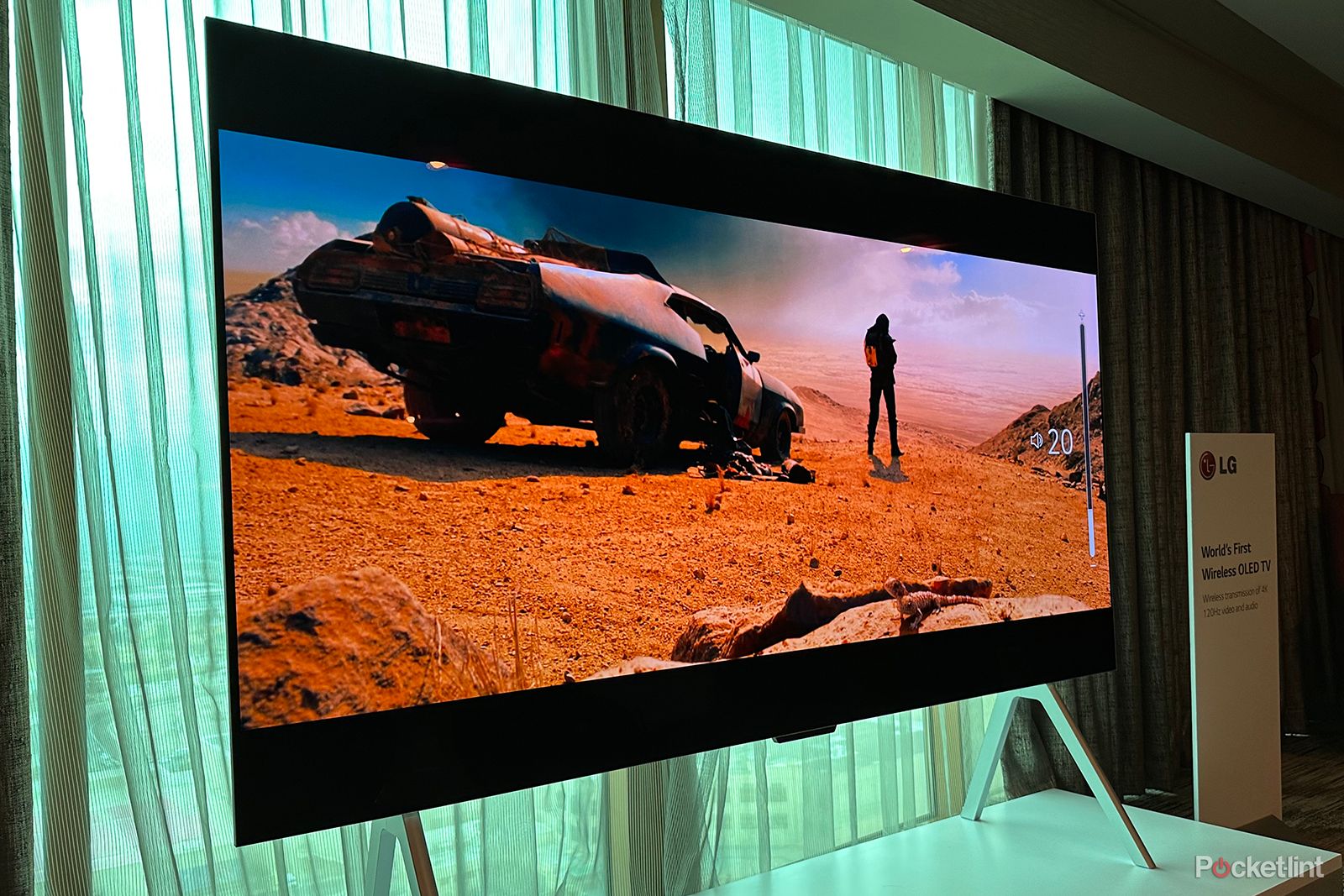
LG M3 OLED TV initial review: Where are the wires at?
We had a demo of the wireless LG Signature OLED M – or LG M3 – TV during CES 2023. Here are our first impressions.
That means the TV is so thin that it looks like a picture frame mounted on your wall.
There are pros and cons to such an arrangement. For example, the control box has to be line-of-sight for the remote to work, so you can’t hide it away entirely.
In any case, you’ll pay for the privilege of a seamless wall mounting experience. The smallest version of this TV is 77 inches and costs $5,000. The largest is 97 inches and costs $30,000. That’s more than my car.
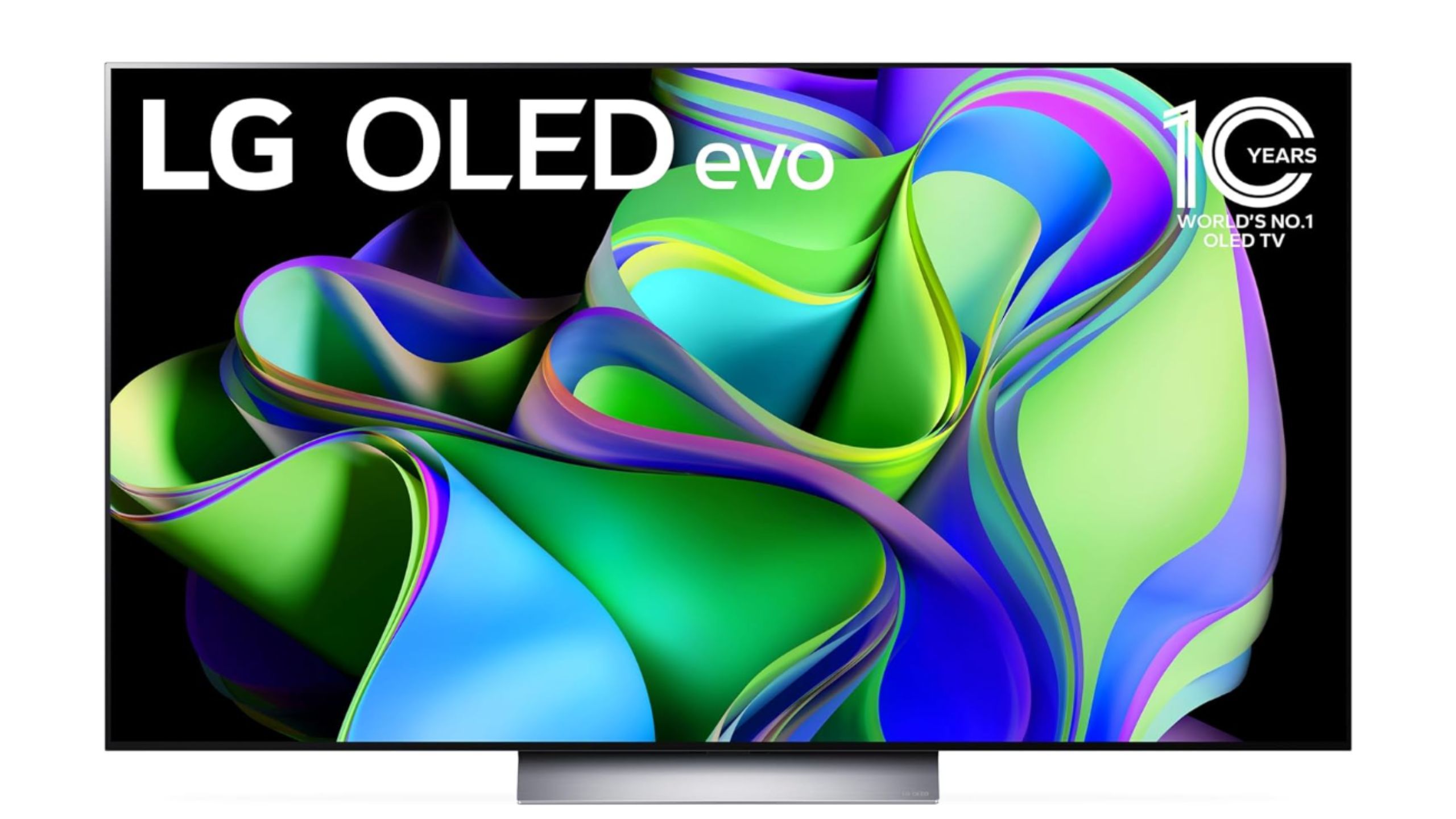
LG C3 OLED
3. Best midrange LG OLED TV
The one you’ll probably get
The LG C3 represents LG’s middle tier of OLED TVs. It’s more reasonably priced than the LG G3 but doesn’t come with every high-end feature. Even so, it still comes with most of them.
- Outstanding picture quality, even with lower brightness
- Also outstanding gaming support
- Not that much different from the G3
- No Micro Lens Array means brightness suffers a bit
- Below-average built-in speaker
The LG C3 is not all that different from the G3. You lose the Micro Lens Array, so the C3 is not as bright. The G3 also has better speakers. Otherwise, the two are remarkably similar. The lower brightness means it doesn’t do as well in bright rooms with lots of glare, but otherwise, it doesn’t affect picture quality much at all.
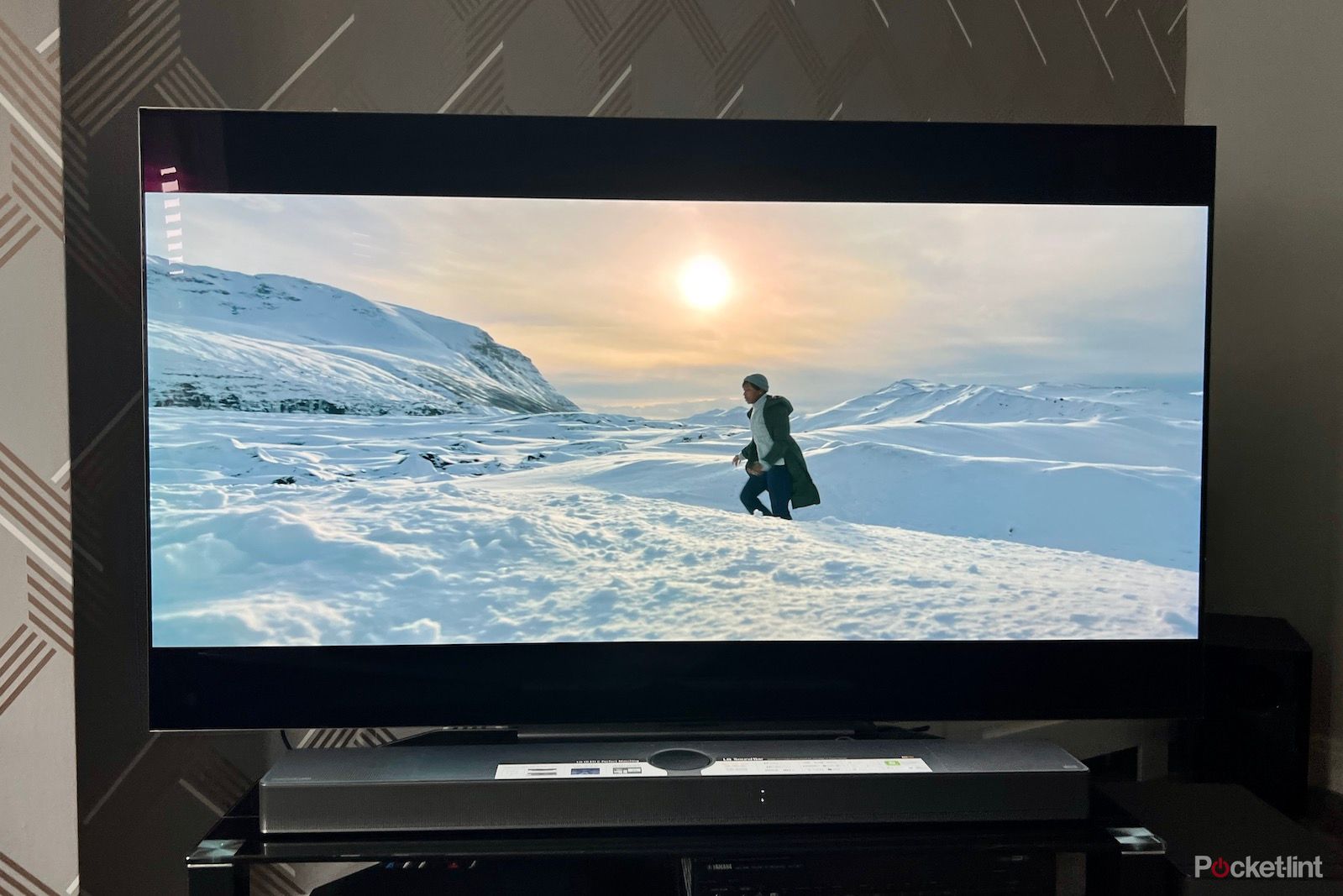
LG C3 OLED review: Subtly does it
The LG C3 brings incremental improvements on last year’s Award-winning LG C2 – can it still hold its own amidst the growing mid-range competition?
You still get perfect black levels, punchy colors, and a 120Hz refresh rate panel. That’s why the C3 is the one most people are likely to buy, provided they don’t put the TV in a room with tons of glare.
The picture quality is outstanding, the gaming support is literally identical to the more expensive G3, and the C3 even comes with a stand. You may want to invest in a soundbar because those speakers aren’t great.
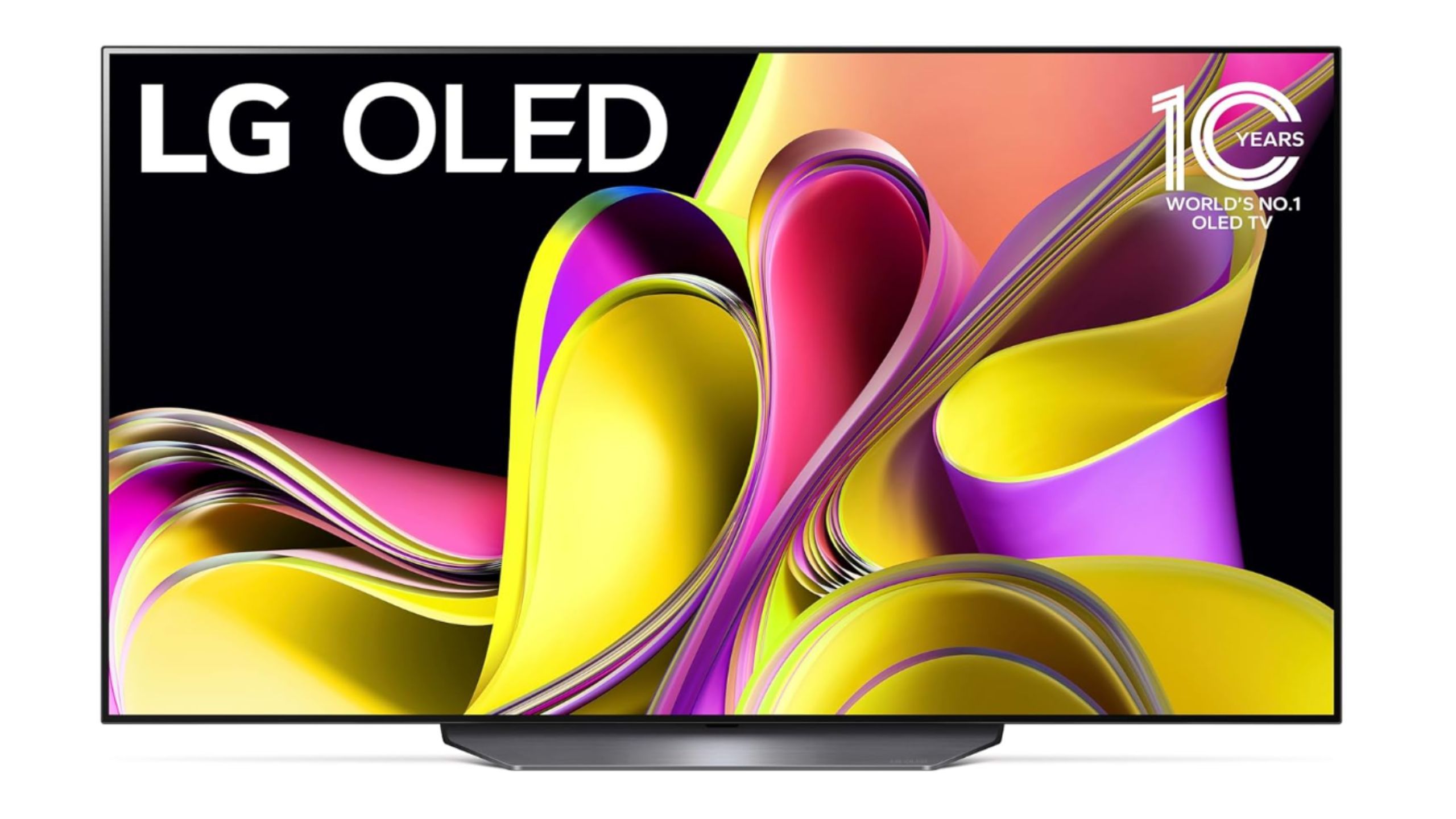
LG B3 OLED
4. Best budget LG OLED TV
It’s almost a C3
$1197 $1297 Save $100
The LG B3 represents LG’s lower middle tier in terms of its OLED lineup. It’s only scaled down from the C3 in a couple of minor ways and shouldn’t cause an issue at all unless you have four HDMI 2.1 devices.
- Yep, it still has excellent picture quality
- Still has all of the high-end gaming features like ALLM and VRR
- Typically hundreds less than a C3
- Not as bright as the C3, especially in HDR
- Only two HDMI 2.1 ports and one of them is also the eARC port
For a few hundred dollars less than the LG C3, you can get the LG B3. You know how this is going to go. The B3 sacrifices some additional brightness, especially in HDR, along with a few other things, to lower the price point a little further from the C3. However, even with the cutbacks, it’s still an LG OLED TV, and the picture quality is still very good.
For gaming, the B3 only has two HDMI 2.1 ports and one of them is also the eARC port. That’s not ideal, but it ultimately shouldn’t be a problem unless you have both an Xbox Series X, a PlayStation 5, and a sound system that uses eARC. If you have those things, you should probably upgrade to the C3. In any case, it often goes on sale for around $1,000, so it’s a steal for an OLED TV.
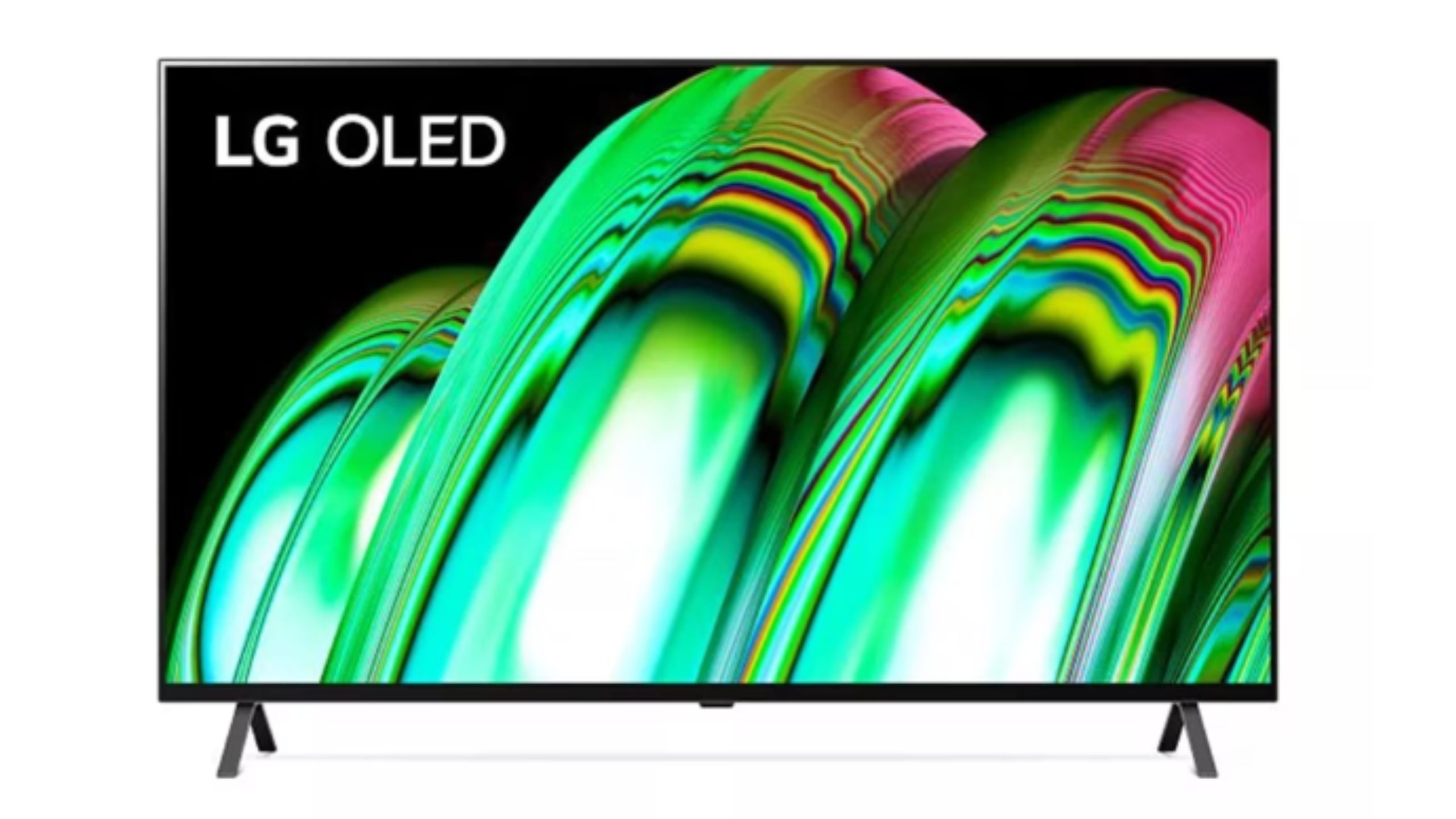
LG A2 OLED
5. Best entry-level LG OLED TV
The cheapest LG OLED on the market right now.
LG’s least expensive option brings you the magic of OLED in a more affordable package. You lose out on some picture quality, gaming, and brightness features of more expensive LG OLEDs, but you still get most features for a reasonable price.
- Despite being LG’s cheapest OLED, it’s still good at everything
- Perfect blacks, good colors, and good overall measurements
- Outstanding pixel response times and low input lag
- Limited support for newer game consoles
- Less bright, only 60Hz, and uses an older processor
The LG A2 is LG’s entry-level OLED TV. Curiously, we haven’t seen a mass release of the LG A3, but you can still buy the LG A2 directly from LG for $1000 flat. The A3 feels like a high-end OLED TV from five years ago, with pros and cons. You still get great colors, perfect black levels, and a TV that’s good at everything. However, you’re missing out on the brightness. Use this only in rooms with minimal glare.
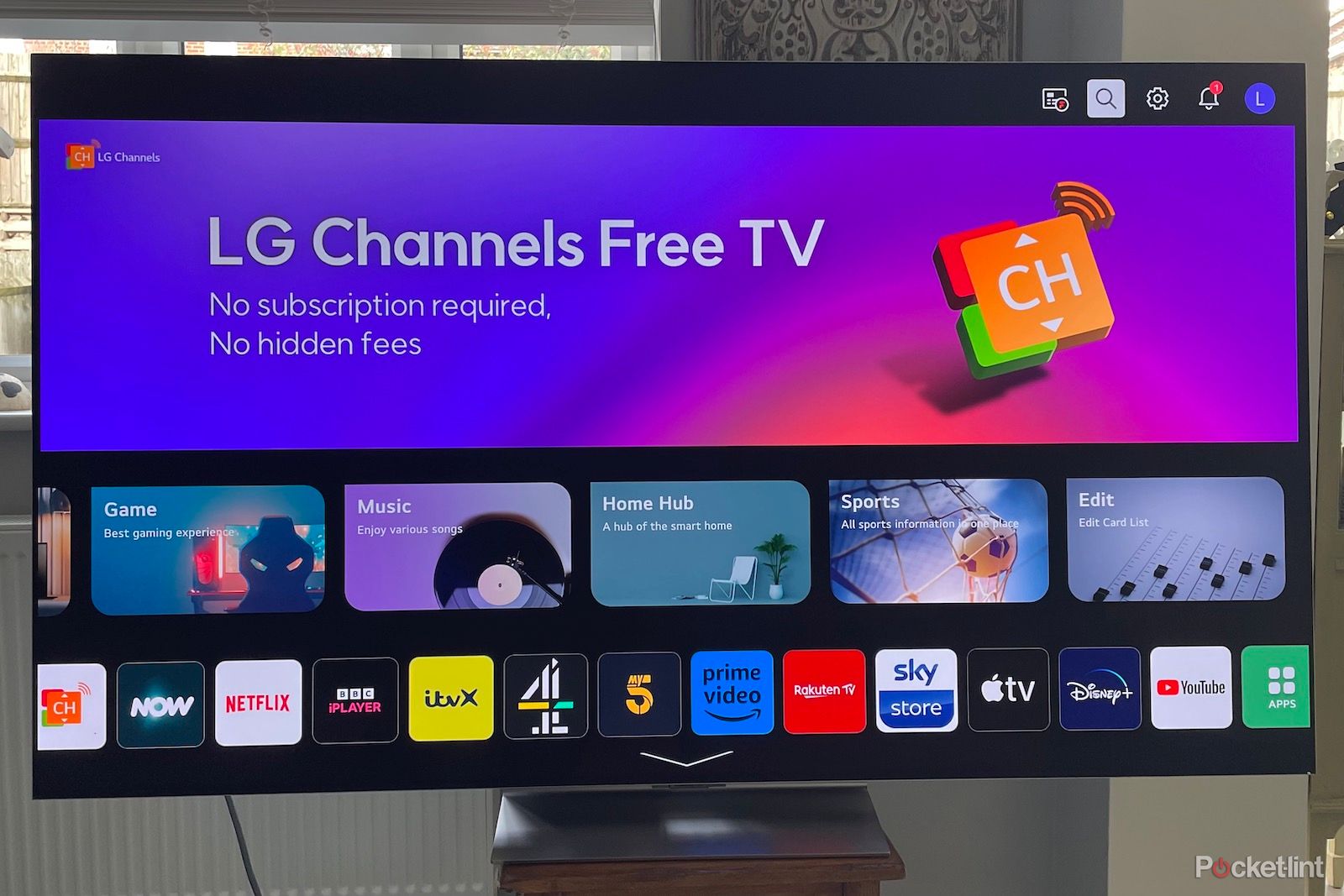
Best gaming TVs: Find a next level display
Top spec gaming TVs offer fast refresh rates and quality displays for engaging play, here are our favorite 6 picks.
In terms of gaming, it’s actually not half bad. The A2 has ALLM, which is always a good thing for gamers. However, due to its 60Hz panel, it doesn’t ship with VRR. That means it has mediocre support for new game consoles, but they still work perfectly fine, provided you don’t mind the lack of 120Hz support. We think the B3 is better for a budget OLED TV, but the A2 isn’t bad.
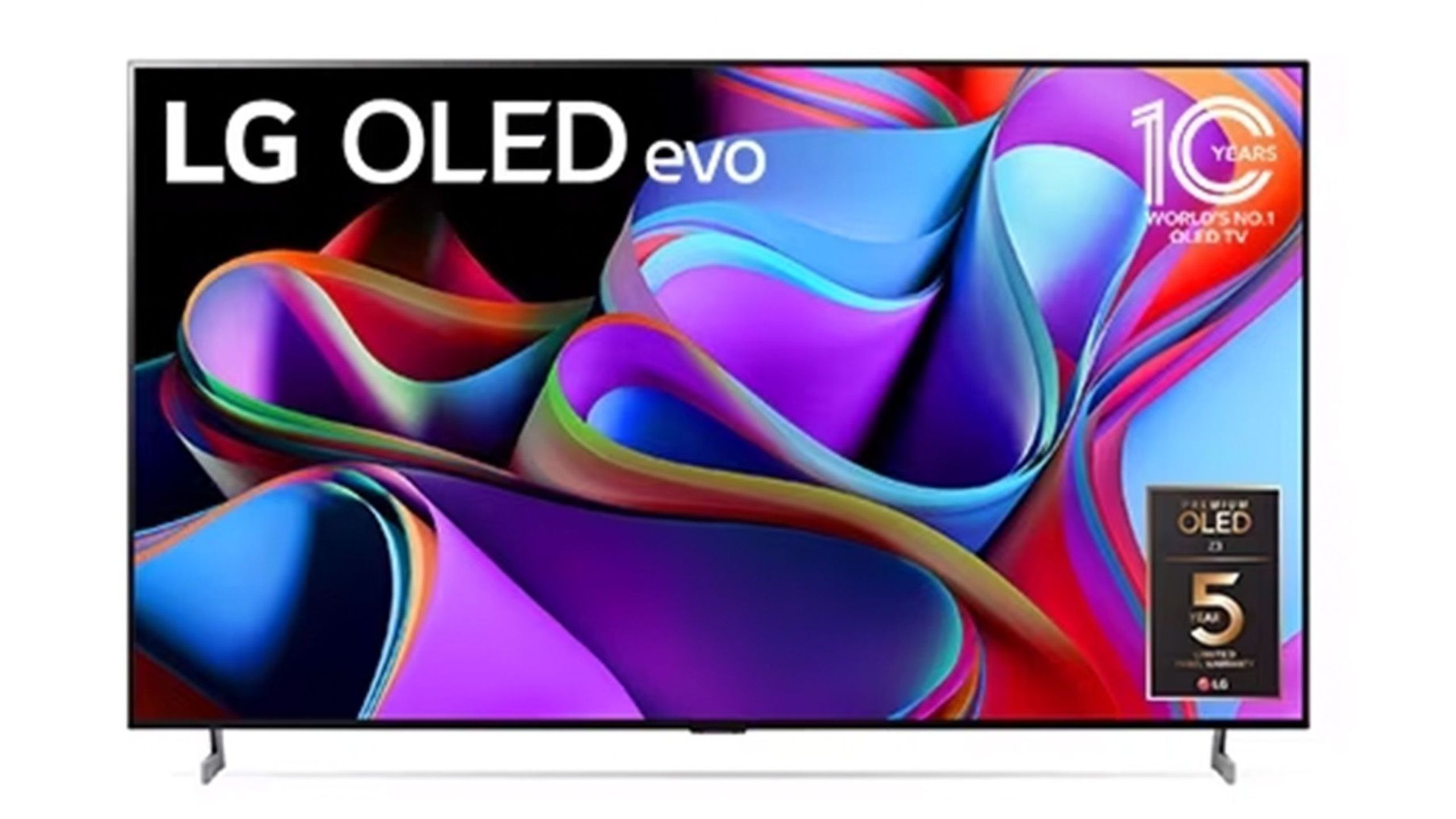
LG Z3 OLED
6. Best LG OLED TV you can’t buy
It only saw a launch in select countries
The LG Z3 is only available in select parts of the world. However, it would’ve been the best LG OLED you could buy if it had seen a mass release. It’s an 8K panel with all the goodies you get on the LG G3.
- Essentially an 8K LG G3
- Micro Lens Array for better brightness and amazing picture quality
- Great for gaming too
- Hilariously expensive
- Only available in Hong Kong and the UK, it seems
You can’t buy this TV unless you live in Hong Kong or the UK. Additionally, it only comes in 77-inch and 88-inch variants, so even if you could buy it, the only existing versions are massive and expensive. In any case, for those who are curious, this would be the best LG OLED TV if it were widely released. It’s essentially an LG G3 but with an 8K panel instead of 4K.
That means it comes with the Micro Lens Array for a brighter picture, the outstanding picture quality of the G3, and all the gaming features like ALLM, VRR, HDMI 2.1, and Freesync. This TV set simply has everything at a resolution so high that people don’t even regularly use it yet. It’s a shame that it’s not available, but the world isn’t ready for 8K yet anyway.
The bottom line: Which LG OLED TV is the best?
The LG G3 is the best LG OLED available right now unless you have the money to pony up for the M3. It has the company’s latest technology to eek every last ounce of brightness that the lineup is capable of giving while keeping the risk of burn-in low. The picture quality and gaming features are on point, with no fundamental weaknesses besides its lack of a stand. Remove the Micro Lens Array, though, and you get the LG C3, which is hundreds of dollars less. That’s the one we think most people will buy.

LG G3 OLED evo
Editor’s Choice
$1897 $2300 Save $403
The LG B3 is holding down the fort as the company’s budget option, and you can find it for a very reasonable price when it’s on sale. That’s the one we recommend for folks looking to get most of the LG C3 and save a few bucks in the process. While the LG A2 is still sold and the A3 exists, we think you’ll be happier if you pay a bit more for the B3.
How did we choose these products?
LG helped out a lot by only giving a wide release to four TVs this year, which include the M3, G3, C3, and B3. The A3 and Z3 didn’t get wide releases. So, really, it was just learning more about each of the TVs and letting you know which one makes the most sense for your budget. Plus, I personally own the LG C3 and, before that, the LG B7a, so I have about seven years of experience with LG OLEDs.
On top of that, our talented staff has reviewed most of the above-listed televisions and their expertise was also taken into account. Editors reviewed this before we wrote it, so plenty of eyes have vetted this information.
What are the advantages of OLED TVs?
There are several differences between OLED and its competitors. The most often cited differences are the perfect black levels, wider viewing angles, and near-perfect pixel response times. That makes OLEDs great for movies, dark rooms, and video games. Since each pixel can turn itself on and off independently, there’s virtually no motion blur unless the media has it.
Newer OLEDs that employ tricks like the aforementioned Micro Lens Array on the G3 shore up many issues with OLED TVs, like the fact that they’re generally less bright than their LCD counterparts. There are instances where LCD panels are better, like longer projected lifespans and no burn-in risk.
How bad is the risk of burn-in on OLED TVs?
There is always the risk of burn-in or, more accurately, permanent image retention. Pixels in an OLED TV are much like candles. Eventually, they’ll burn down and lose their ability to shift from color to color as well as they could. Static elements on the screen can hasten this effect, which is where most burn-in comes from.
LG and other manufacturers have been working on this problem for years. Modern TVs have a few safeguards to help prevent the issue. For LG specifically, the company employs pixel shifting, a Screen Saver function that turns on after you turn the TV off, and the Logo Luminance Adjustment function that recognizes static images on-screen and lowers the luminance of those pixels to prevent burn-in.
Are LG OLEDs better than Samsung, Sony, and others?
So, the answer to this is a little complicated. In general, the other TV makers have great OLED panels as well. The best one usually depends on personal preferences. Sony has very good upscaling while Samsung has very punchy colors, for example, but those are based on internal tweaks by each TV maker. You should buy the one you like. That said, LG makes top-of-the-line OLEDs, so it’s a good company to start with.
Additionally, LG makes OLED panels for many of its direct competitors. In fact, LG is the only company that only uses in-house panels. Sony, Vizio, and even Samsung buy LG OLED panels for use in their own TVs. Thus, unless the TV has Samsung’s QD-OLED panel, which Samsung does also farm out to other companies, there are good odds that you’re comparing two LG OLED panels,
LG/ Pocket-lint
What happened to the LG A3?
To be perfectly honest, we don’t know. LG has one, and you can buy it in the US. We don’t recommend anyone buying it. LG sells it online for $2,300, and there doesn’t seem to be any good reason why. It has the same LG a7 Gen 6 processor, which is the same processor as the LG B3, so it’s clearly a budget-oriented product.
We’re not sure why LG didn’t give this a mass release. They have it, and it’s clearly an upgrade from the LG A2 in our list above. With the 4-series TVs coming in 2024, the LG A3 is a lost cause, and we don’t recommend you buy one. Go with the B3 instead, even if another company makes the other TV.
Trending Products

Cooler Master MasterBox Q300L Micro-ATX Tower with Magnetic Design Dust Filter, Transparent Acrylic Side Panel, Adjustable I/O & Fully Ventilated Airflow, Black (MCB-Q300L-KANN-S00)

ASUS TUF Gaming GT301 ZAKU II Edition ATX mid-Tower Compact case with Tempered Glass Side Panel, Honeycomb Front Panel, 120mm Aura Addressable RGB Fan, Headphone Hanger,360mm Radiator, Gundam Edition

ASUS TUF Gaming GT501 Mid-Tower Computer Case for up to EATX Motherboards with USB 3.0 Front Panel Cases GT501/GRY/WITH Handle

be quiet! Pure Base 500DX ATX Mid Tower PC case | ARGB | 3 Pre-Installed Pure Wings 2 Fans | Tempered Glass Window | Black | BGW37

ASUS ROG Strix Helios GX601 White Edition RGB Mid-Tower Computer Case for ATX/EATX Motherboards with tempered glass, aluminum frame, GPU braces, 420mm radiator support and Aura Sync


